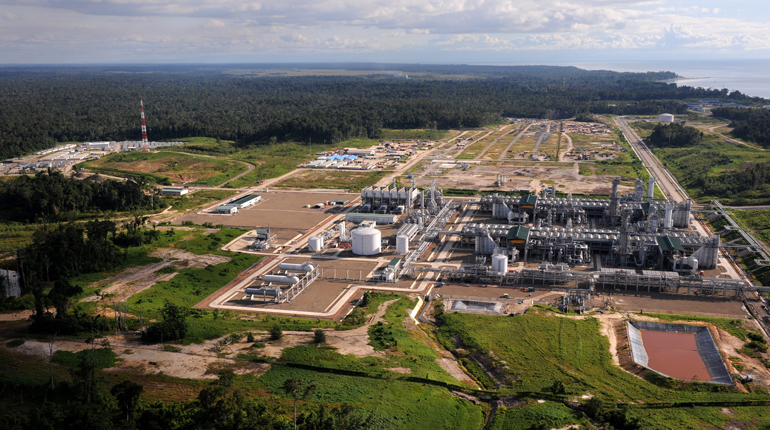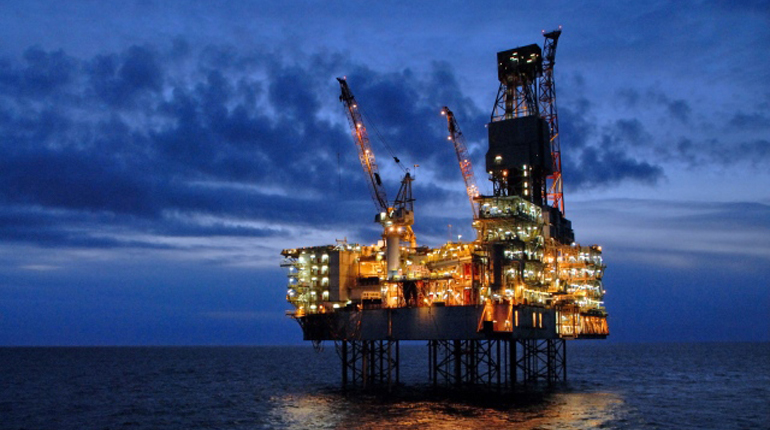 Tangguh LNG. BP has decided to add a third train to the facility. (BP plc)
Tangguh LNG. BP has decided to add a third train to the facility. (BP plc)
The construction of a third train at BP’s Tangguh LNG plant will help create a small-scale LNG market in Indonesia, according to a senior analyst at the country’s oil and gas regulator.
BP was only able to take an FID on the $8 billion project because state power producer Perusahaan Listrik Negara (PLN) increased the amount of LNG it agreed to purchase from the plant from 1.5 mtpa to 2.8 mtpa. The remaining 1 mtpa is contracted to Japan’s Kansai Electric Power Co.
Because the majority of the LNG produced from the train will be delivered to the domestic market, the consortium developing it is considering incorporating small-scale LNG infrastructure into the design, according to Anas Pradipta, senior LNG analyst at Indonesia’s state regulator SKKMigas.
"Based on current technical discussion, the Tangguh consortium will build a facility to accommodate small vessels," he told Interfax Natural Gas Daily.
PLN has long had plans for an LNG break-bulking station in the eastern part of Indonesia, in Papua or the nearby Moluccas islands, and Tangguh could fulfil them. The LNG would be used to supply small power plants being planned for islands in the east of the country.
"Small-scale power plants such as those in Benoa or Gorontalo will be supplied from the plant," Pradipta said.
However, PLN could struggle to build the import infrastructure and power plants in time to make full use of the LNG from Tangguh’s third train, according to David Ledesma, founder of independent energy consultancy South Court.
"PLN and Pertamina have a clearly stated strategy to establish a network of small-scale LNG terminals throughout the archipelago. I believe that some will be built, but some will get delayed. As such, there could be some infrastructure constraints," he told Interfax Natural Gas Daily.
BP will start building Train 3 this year and is looking to produce first LNG in 2020.
Massive expansion
PLN and Pertamina have been tasked with expanding the country’s electricity capacity by 35 GW by 2019. This is considered an ambitious target – slow progress has resulted in five floating power plants being ordered to meet demand while the power plants are built.
As part of the electrification project, Indonesia has plans for nine FSRUs to be in operation around the country by 2020, up from its current two. This is also considered to be an ambitious timeframe given the complexity of organising FSRU projects and the lack of available vessels.
The unavailability of small-scale vessels to deliver LNG between liquefaction plants and terminals could also prove to be a problem, according to Eduardo Perez Orue, co-founder of small-LNG.com.
"The small-scale LNG import project in Bali is using some old tonnage because there is not much more available," he told Interfax Natural Gas Daily previously.
The high cost of small-scale LNG vessels has meant few have been ordered, and their 2-3 year build time is another factor. Cabotage laws, which require vessels engaged in coastal trade to be owned locally, are another barrier to the creation of a shipping business.
Sufficient demand
Initially, PLN was not sure that domestic demand would be large enough to warrant purchasing 2.8 mtpa from Tangguh’s third train, but Indonesia’s plan to expand its electricity generation capacity was a game-changer, according to Pradipta.
"With gas set to contribute 16-19 GW of the 35 GW expansion in power capacity, there will definitely be enough demand," he told Interfax Natural Gas Daily.
With declining production at the Bontang plant and Abadi LNG not expected to start up before 2025, it makes sense for PLN to support the expansion of Tangguh, as it will reduce its reliance on imported LNG.
BMI Research forecast in March that Indonesia would become a net importer of LNG in 2022, but this did not include the additional capacity provided by Tangguh’s third train. The project will improve energy security and delay the point at which Indonesia becomes a net LNG importer. It is also anticipated to help the development of the Papua region.
"Train 3 will benefit the local community because of the development of a fertiliser plant near the project. It will mean a lot to the development of the community, as well as maintaining energy and food security," Pradipta told Interfax Natural Gas Daily.
BP announced that the project would create 10,000 jobs during construction and that it would develop the skills of the Papuan workforce.
Indonesia’s remote islands rely on diesel- and oil-fuelled power generation, which is expensive and subsidised by the state. Converting these plants to run on gas will result in substantial savings, according to Benny Bernarto, partner at Australian law firm TNB & Partners.
"Switching from diesel fuel to gas will reportedly save the government about IDR 4 billion [$305,000] per day," he said.







Talk to us
Natural Gas Daily welcomes your comments. Email us at [email protected].